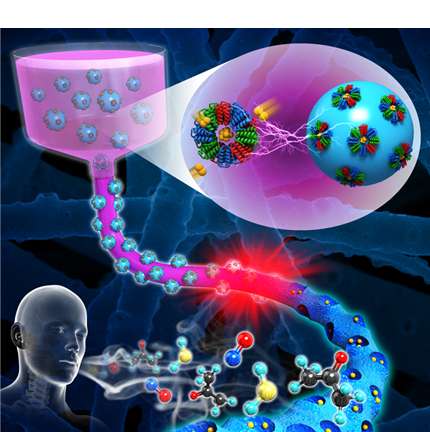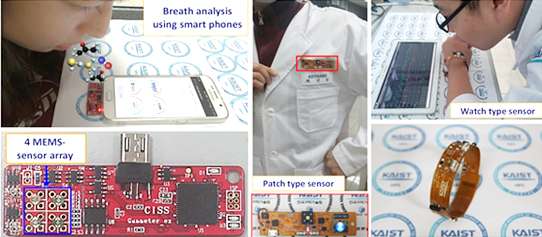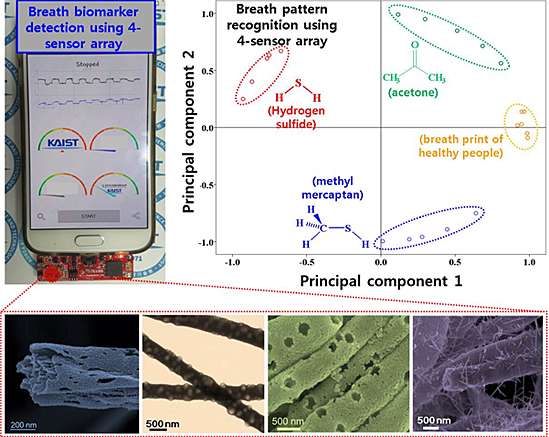Sensitive electronic biosniffers diagnose diseases via biomarkers in breath

Professor Il-Doo Kim in the Department of Materials Science and Engineering at Korea Advanced Institute of Science and Technology (KAIST) is developing ultrasensitive and highly selective gas sensors to diagnose diseases by exhaled breath analysis. Professor Kim has led the development of semiconductor metal oxide-based nanofiber sensor arrays, which are optimized for pattern recognition of breath prints.
Human breath contains a number of volatile organic compounds (VOCs). Accurate detection of specific VOCs in exhaled breath can provide essential information for the early diagnosis of diseases. For example, acetone, H2S, ammonia, and toluene can be used to evaluate diabetes, halitosis, kidney malfunction, and lung cancer, respectively, where the diagnosis of these diseases can be achieved by analyzing the concentration of VOCs in exhaled breath, originating from the molecular exchange between lung tissue and blood. Variations in the concentration of the exhaled VOCs that may serve as biomarkers for specific diseases can distinguish healthy people from those who are sick.
The non-invasive diagnosis of various diseases is the key advantage of exhaled breath analysis techniques over other commonly used methods. For example, conventional diagnostic methods such as MRI, CT, blood test, endoscope, and X-ray examination, which are expensive and sometimes painful, are usually implemented in hospitals. However, in the near future, inexpensive and simple diagnoses are expected to detect and examine diseases in the early stages. The use of multi-sensor arrays with nanostructured semiconductor metal oxides is essential for developing inexpensive and simple diagnostic tools by examining the concentration of VOCs in exhaled breath. The research team has been developing an array of breathing sensors consisting of a number of semiconductor metal oxide fibers, which will offer patients a real-time diagnosis of diseases.

The sensor arrays are advantageous in terms of gas adsorption, leading to large resistance changes achieved by high specific surface area and porous nanostructure. In particular, highly selective biomarker sensing was accomplished by functionalization of diverse noble metallic catalysts such as Au, Pt, Pd, and Rh, which are essential to establishing multiple sensor arrays for analysis of breath prints. These sensor arrays can be integrated with portable devices for real-time monitoring of physical conditions.
'The sensor technology is compatible with various types of smartphones, wearable electronic gadgets, and medical devices' Professor Kim added.
The sensor platform using metal oxide nanofibers can be utilized both in the field of disease diagnosis and indoor/outdoor air quality control. "We believe that there can be many ways to incorporate our technology based on the particular needs of industries, not just in the field of medical devices, such as detecting hazardous chemicals or gases at manufacturing factories." Professor Kim said.


















